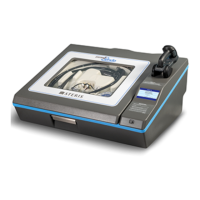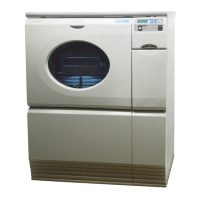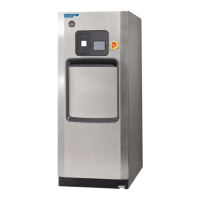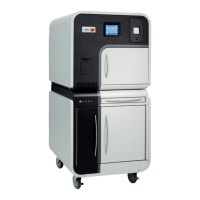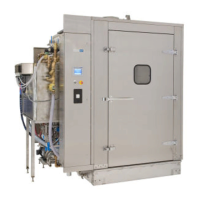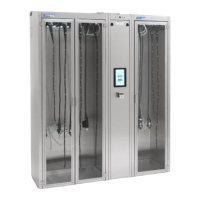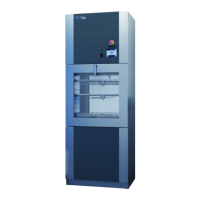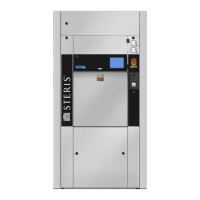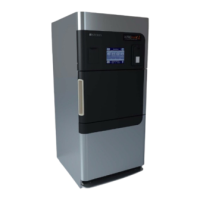5-12
764333-675
5.2.13 Concentration Monitor Failed
Description – Control checks concentration monitor
circuit and compares to calculated values, alarm occurs
if below set value.
Action:
1. Faulty CK1 – replace.
2. Scale buildup on CP1 and CP2 – clean.
3. Faulty control board – replace. (Refer to Figure 5-5.)
4. Other:
The concentration reading is monitored while the
unit is full and water is warm from the Heat Rate
Test. The control records the high reading at this
time. While the unit is draining during the drain
and HP pump tests, the control watches the
concentration and records the low reading. (The HP
pump is left on while draining to help blow out the
high pressure transition block.) If the difference
between the high and low reading is not at least
three counts, the test fails.
A failure of this test can be caused by low
conductivity water, failure of the unit to drain
properly, or defective component. Use the
following troubleshooting guide to determine
cause.
Look lat the printout for the following:
CONC
MONITOR FAILED
MINIMUM X
SHOULD READ X
The MINIMUM is the lowest reading that the unit
recorded during the test. Reading must be three
counts less than the high reading. The SHOULD
READ is the minimum reading control expected to
see HIGH READING – 3 COUNTS.
Example:
CONC. MONITOR FAILED
MINIMUM 56
SHOULD READ 55
This means that the high reading was 58 counts
(SHOULD READ +3 counts) and the lowest reading
that the unit saw was 56 counts. The test failed since
the low reading was not three counts less than the
high reading. To troubleshoot the problem, first
verify that the control is functioning properly as
follows:
Unplug CN9 from the interface board and enter the
service mode. Go to CALIB menu and select the
VIEW option. Under the VIEW menu, select CONC
to view the concentration counts. First, place a
jumper between TP1 and TP2 on the interface board.
The counts displayed should be approximately 170.
Next, place the jumper between TP1 and TP3 on the
interface board. The counts displayed should be
approximately 117.
5.2 DIAGNOSTIC CYCLE FAULTS (CONTINUED)
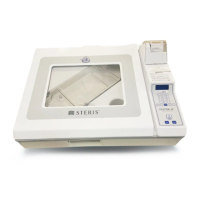
